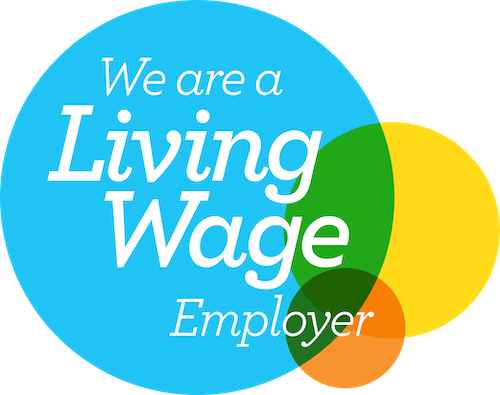At Christmas, lovely people want to buy lovely things for their lovely friends and lovely family. If you’re reading this, I bet you sell lovely stuff – so here’s 5 small website tweaks that will help you sell more products this Christmas.
The first of your website tweaks: Christmassify your homepage
This might sound well obvious – and to me it sounds well fun – from late October until the end of December, your website homepage should take a note from from Noddy Holder and scream, “IT’S CHRISTMASSSS”.
Our silly human brains are often not as smart as we give them credit for. When we see a picture of a lovely product surrounded by jingle bells and holly, our brain checks ‘find Christmas present’ from our mental to-do list before the thought has entered our consciousness.
If I’m surfing the web looking for a lovely trinket box to buy Aunt Geraldine for a Christmas present, your homepage text and pics can check off ‘trinket box’, ‘Christmas’ and ‘present’, meaning my brain only needs to worry me with thinking about Ar’ Ger.

Remove distractions from your main menu
Nobody needs to read an ‘About’ page when they’re trying to buy treats. Nobody needs to find your high street stockists when they are trying to check out from your website right now.
Your main menu should only show options that help your customers get from where they are to the product they’re going to buy. About, Contact, Delivery, FAQs, blogs and social links are distractions that can be popped in the website footer or top bar.
Instead, stick to super clear product categories that cover the top-level of your product catalogue. If you’re a fashion retailer, this could be tops, bottoms, and dresses. If you run a plant shop, you might be looking at tropical plants, cacti & succulents, plant pots and plant care.
Always include a ‘New In’ link to help regulars find products they’ve not seen before, and ‘Sale’/’Clearance’ if you have some end-of-line stock to clear.
Create a gift section
Did I mention how our brains are not smart? Theoretically, we know that pretty much anything we sell could be a gift for the right person. But when you’re shopping for someone you don’t know too well, or you’re visiting a store in the hopes of finding gifts for multiple people, having one or more sections of your website labelled ‘Gifts’ takes another layer of thinking away.
Up-sell and cross-sell
I have a few business catchphrases, “email marketing is the tits”, “Wix is a turd”, and my new go-to “it’s way easier to sell two things to one person, than two things to two people”.
In marketing, our main job is to communicate a brand and products in order to generate customers. If each customer buys two products instead of one, Aime has to work half as hard – right?
Getting the right people to your online shop is the biggest battle, which is why thoughtful, relevent up-sells and cross-sells can add serious dolla to your average order value and revenue.
Up-sells are add-ons or upgrades to the product your customer wants to buy. This can be as obvious as adding gift wrapping or a personalised thank you note. It could be turning a single greetings card into a pack of 6 greetings cards. Maybe you’d like to add an engraved message to that bangle for your bezzie, or a monogram for your stationery-obsessed sister from another (or the same) mister.
Cross-sells are about completing a set of complementary products. Think the matching hat to a scarf, the needle wrap for a knitting kit, a beautiful pen to match the beautiful year planner.
If you think about Christmas shopping – or pretty much any shopping excursion – it’s so relieving when we can tick off multiple items from the same location. If I have a £20 budget for Uncle Kev, and you sell a fishing-themed wallet for £15 – you can bet I’ll buy the matching thermal flask for £8 if you show it to me.
I’m happy, Kev’s happy, you’re happy. Toight.
You can execute up-sells and cross-sells in different ways. Some platforms like WordPress’ WooCommerce have this functionality built in. For some, it means manually building product bundles and having a separate entry in your online shop – either way, I think you should get on it.
Use your free delivery limit as a marketing tool
I love telling people when they’re doing something ineffectively. It’s perfect for helping small businesses get the most out of their communications, but terrible for when Alex is cooking dinner and we disagree on the best way to prepare chicken thighs for Taco Tuesday.
Now, let me tell ya – small businesses suck at using free delivery limits. Sorry.
A well-pitched free delivery limit (e.g. spend over £50 to receive free UK shipping) is the strongest call to action to add a second product to your online basket. Think now about the last time you were shopping online and realised you were about £10 short of a free delivery limit – £10 short for saving £4. I bet you went searching for one last tidbit that would be a bargain add to your order.
There is no fixed value for when you should offer free national delivery (apart from on Etsy when you should offer it all the time, but that’s a whole other conversation). It depends on your business – as a rule of thumb, I’d set it to a round number which is £8 – £15 above your average order value (AOV).
If your AOV is £31.30 – set your free delivery at £40. If your AOV is £12 – go for £20.
There are a couple of massive exceptions to this rule. If you sell heavy products – you have higher shipping costs, and therefore should have a higher free delivery limit. You shouldn’t take a significant margin hit on lower-value orders.
The other exception is if your business has a signature product. For example, Frank Green sell reusable travel mugs – that’s their jam. They also sell spares, accessories and gifts, and because of the variation in their supplementary range, their average order value might be lower than the price of their signature product.
I would never use a free delivery limit under the value of a key product, otherwise you have nothing to offer as a reward for adding that second item.
One thing to bear in mind is that it’s a lot easier to encourage your customers to purchase more and meet that limit when you have products that hit the price point which is the difference between your AOV and free delivery limit. I know that sentence was a mouthful, but if we go back to the earlier examples of an AOV of £31.30 and free delivery at £40, it just makes sense that it’s easier to get people to top-up and order if you sell some products that are £10 or less.
Free delivery limits should always, always be used as a marketing tool – not ‘just because’ or when you think you ‘should’. Apart from Etsy, so I’ve added a little note at the bottom of this post with why I support Etsy on free delivery.
Now go sell more Christmassy goodness
These 5 tweaks aren’t the only actions that will help your small business sell more lovely stuff – but by golly they will help! Now close this blog post, open your website back end, and start preparing for the winter rush.
Appendix: Why I’m totes with Etsy on offering free national delivery
I know this sounds so counter-intuitive given my last point above, but hear me out: I fully support Etsy’s push towards products that include free shipping. Here’s why.
The number one reason why UK online shoppers abandon purchases is because of unexpected costs at the checkout. Etsy’s model allows customers add items from multiple sellers – which is banging. I can buy yarn, pin badges, birthday cards and stained glass suncatchers in a single transaction, saving me a buttload of time and faff.
As much as I can keep track of the total value of the products, there’s absolutely no way to keep track of the aggregated shipping costs. People like me get to our baskets, see a delivery cost that can be higher than some of products – and start removing products to get that shipping cost down.
The products would be removed based on the P&P, and not actually how much the shopper wanted the product.
By encouraging sellers to offer free shipping, Etsy is trying to level the playing field. They want customers to prioritise their product purchases based on merit – not on shipping cost. That’s a good thing.
“But Aime, posting my products costs like £3 plus a walk to the Post Office – and now Etsy wants me to absorb that cost?!”.
Bbz, they don’t want that at all. They want you to put your prices up. If you’re a business selling on Etsy, you should work the P&P into your cost price, and adjust your retail price accordingly. The consumer is still covering postage, they’re just not scared off by it appearing at the checkout.
Again, this isn’t a flat rule for everyone – furniture couriers are much more expensive than a second-class stamp. Find what works for you, but don’t blame Etsy for trying to help people sell more lovely stuff.























